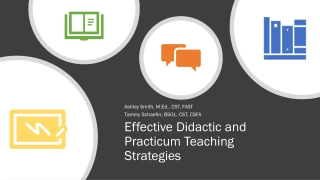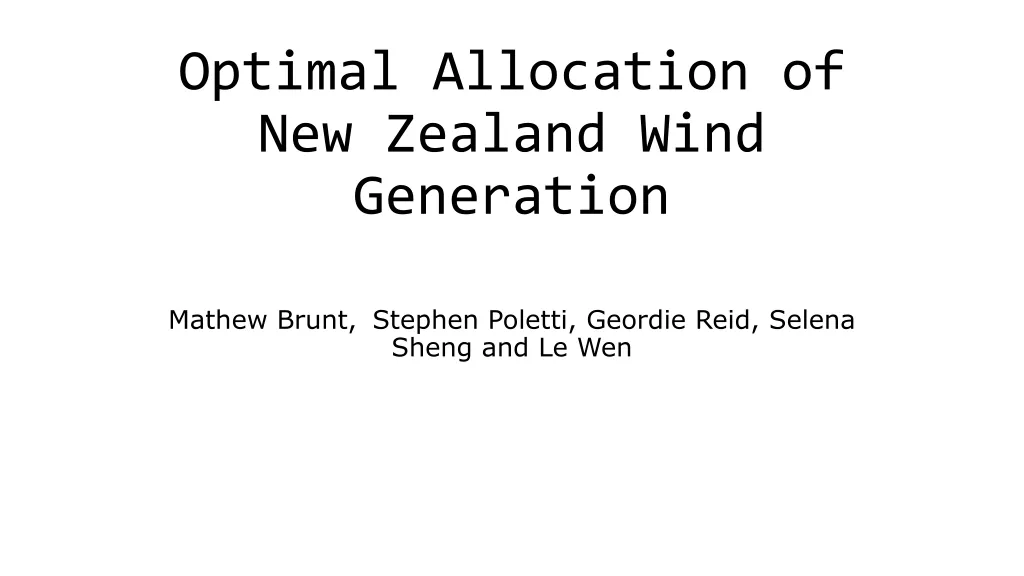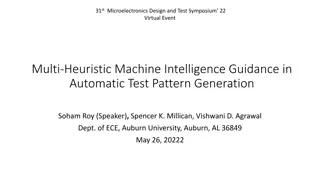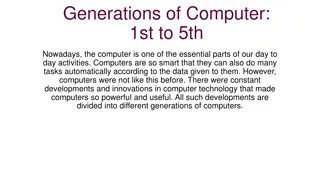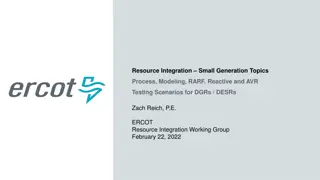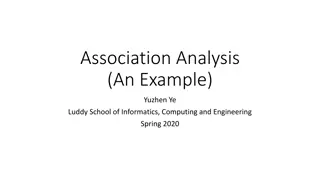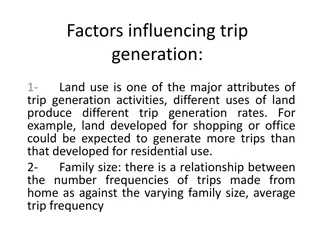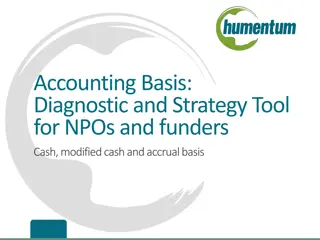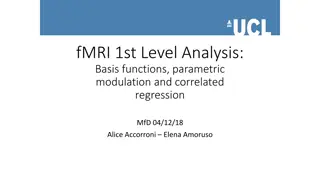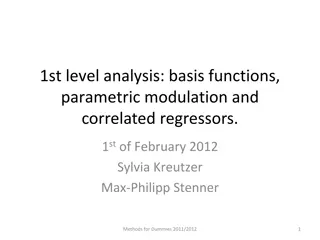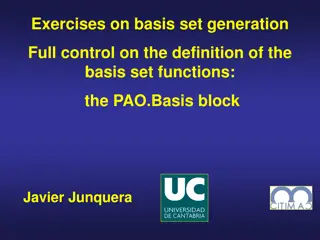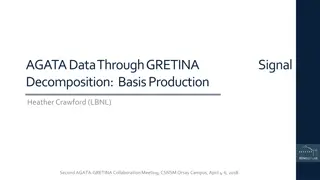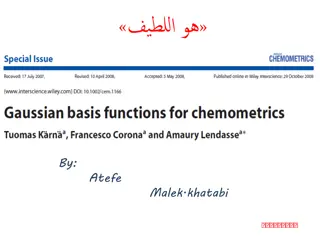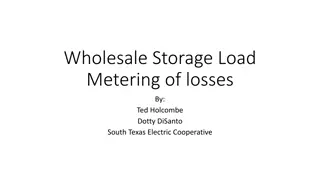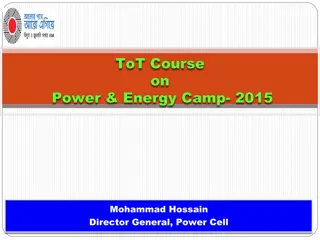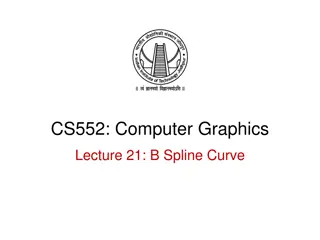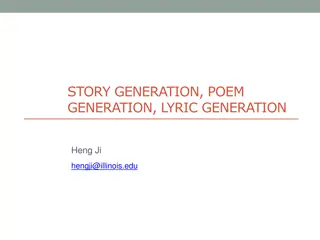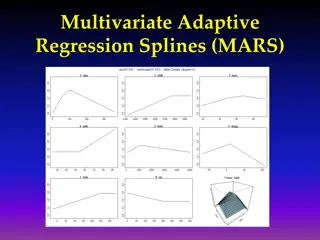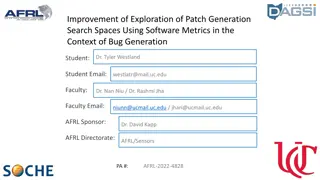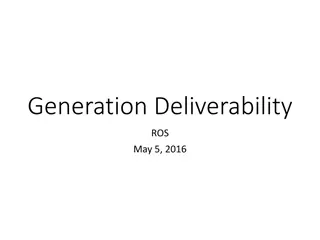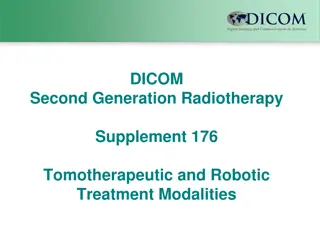Demand Generation Strategy
Executives in charge of demand generation must be well aware of the weaknesses that could undermine the effectiveness of their strategy. In this post, we'll discuss seven common mistakes to avoid while creating B2B demand. By being cognizant of these possible roadblocks and taking the necessary step
4 views • 2 slides
Understanding Different Generations in Education
Explore the characteristics and preferences of various generations in education, from the Baby Boomer Generation to Generation Z. Gain insights into their communication styles, educational approaches, and technological adaptability. Understand the unique dynamics of each generation to enhance teachi
4 views • 41 slides
Optimal Allocation of New Zealand Wind Generation Study
Investigating the optimal location and quantity of wind generation in New Zealand to achieve a transition to 100% renewable energy by 2050. The study focuses on factors like net demand match, capacity factors, and hour-to-hour variability, utilizing simulated wind output data and considering penalti
3 views • 15 slides
Great Coxwell Community Energy Project Feasibility Study
The Great Coxwell Community Energy Project aims to provide sustainable heating and hot water to the whole village, replacing existing boilers and addressing fuel poverty while reducing carbon emissions. Various renewable energy generation options were considered, with key findings indicating the imp
7 views • 9 slides
Ernest Hemingway: Iconic Writer of the Lost Generation
Ernest Miller Hemingway, born in Oak Park, Illinois, was a prominent writer of the Lost Generation. His experiences in World War I influenced his writing style, marked by simplicity and objectivity. Moving to Paris, he mingled with Modernist artists and revolutionized American fiction. The Lost Gene
2 views • 24 slides
Multi-Heuristic Machine Intelligence for Automatic Test Pattern Generation
The 31st Microelectronics Design and Test Symposium featured a virtual event discussing the implementation of multi-heuristic machine intelligence for automatic test pattern generation. The presentation covered motivation, modus operandi, experimental results, conclusions, and future works in the fi
1 views • 17 slides
Evolution of Computer Generations: From 1st to 5th
The development of computers is categorized into generations based on technological advancements. Starting from the First Generation (1946-1959) with vacuum tubes to the Fifth Generation known for artificial intelligence, each era brought significant changes in computer capabilities. First-generatio
0 views • 7 slides
Resource Integration Small Generation Topics and Processes
This document discusses various topics related to small generation resources such as Distributed Generation Resources (DGR) and Distributed Energy Storage Resources (DESR). It covers processes, modeling, Reactive and Automatic Voltage Regulation (AVR) testing scenarios, timelines, simplified modelin
1 views • 39 slides
Enhancing Information Retrieval with Augmented Generation Models
Augmented generation models, such as REALM and RAG, integrate retrieval and generation tasks to improve information retrieval processes. These models leverage background knowledge and language models to enhance recall and candidate generation. REALM focuses on concatenation and retrieval operations,
1 views • 9 slides
High-Throughput True Random Number Generation Using QUAC-TRNG
DRAM-based QUAC-TRNG provides high-throughput and low-latency true random number generation by utilizing commodity DRAM devices. By employing Quadruple Row Activation (QUAC), this method outperforms existing TRNGs, achieving a 15.08x improvement in throughput and passing all 15 NIST randomness tests
0 views • 10 slides
Comparison of 2nd vs 3rd Generation Fire Suppression Systems
The comparison highlights the evolution from 1st generation dry chemical agents to advanced 3rd generation systems like the Piranha Hybrid System, ensuring better fire protection in restaurants. It discusses the drawbacks of 2nd generation systems, emphasizing the need for improved fire suppression
1 views • 20 slides
Understanding Association Analysis in Data Mining
Explore the concepts of association analysis, itemset definition, frequent itemset identification, Apriori algorithm, support counting using hash tree, and rule generation from frequent itemsets. Learn the principles of identifying frequent itemsets, support-based pruning, candidate generation, and
0 views • 6 slides
Factors Influencing Trip Generation and Analysis Methods
Trip generation is influenced by factors such as land use, family size, auto ownership, and family income. Methods like cross-classification and regression analysis are used to analyze and estimate trip productions. Developing trip generation curves from household data helps understand the relations
0 views • 7 slides
Strategic Priorities for Sustainable Electricity Generation in Sierra Leone
The Ministry of Energy in Sierra Leone has outlined strategic priorities to ensure sustainable electricity generation and supply in the short, medium, and long term. Key actions include implementing an integrated electricity plan, identifying externally funded projects for power supply, and addressi
0 views • 19 slides
Accounting Basis Diagnostic Tool for NPOs and Funders
This diagnostic tool focuses on cash, modified cash, and accrual basis accounting for Non-Profit Organizations (NPOs) and funders. It explains the impact of accounting basis decisions and how to utilize the tool effectively. Designed for NPOs and funders, it helps in understanding, negotiating, and
0 views • 39 slides
Understanding fMRI 1st Level Analysis: Basis Functions and GLM Assumptions
Explore the exciting world of fMRI 1st level analysis focusing on basis functions, parametric modulation, correlated regression, GLM assumptions, group analysis, and more. Dive into brain region differences in BOLD signals with various stimuli and learn about temporal basis functions in neuroimaging
0 views • 42 slides
Understanding Basis and Dimension in Linear Algebra
Basis and dimension are fundamental concepts in linear algebra. A basis is a set of vectors in a vector space that allows us to represent any vector by multiplying and adding the basis vectors. The dimension of a vector space is the number of elements in its basis. Linear independence, spanning sets
0 views • 13 slides
Understanding Basis and Dimension in Linear Algebra
Basis and dimension are fundamental concepts in linear algebra. A basis is a set of vectors that can represent any vector in a given space through linear combinations. The dimension of a vector space is determined by the number of elements in its basis. Linear independence, spanning, finite-dimensio
5 views • 13 slides
Understanding Basis Functions and Hemodynamic Response Functions in fMRI Analysis
This content discusses the use of basis functions, parametric modulation, and correlated regressors in the first-level analysis of fMRI data processing. It delves into the concept of temporal basis functions for modeling complex functions of interest, such as the canonical hemodynamic response funct
1 views • 26 slides
Comprehensive Overview of Sewage Treatment Plant Processes and Energy Generation
This seminar presentation dives deep into the world of sewage treatment plants, covering definitions, introduction, STP treatment stages (including primary, secondary, and tertiary treatments), energy generation through microbial fuel cells, and biogas generation. It emphasizes the importance of tre
0 views • 15 slides
Understanding Electron Correlation and Basis Sets in Molecular Calculations
Polarized basis sets describe the electron density polarization in atoms and molecules to improve accuracy in computed geometries and frequencies. Diffuse basis sets are recommended for calculating electron and proton affinities. Electron correlations account for electron interactions in molecular c
0 views • 8 slides
Automatic Optimization of Basis Set Parameters for Enhanced Quality
Learn how to automatically optimize the parameters that define the quality of the basis set with the Simplex code, as detailed by Alberto García Javier Junquera. This process involves compiling the Simplex code, preparing the necessary input files, creating a directory for running the optimization
0 views • 11 slides
Development of Attosecond Theory for Nobel Prize through Verilog Programming
Attosecond generation is a crucial technique for creating attosecond pulses by manipulating radiation waves. This research paper focuses on developing the Attosecond generation equation through Verilog programming and validating it using test programming techniques. The interface between equations,
0 views • 15 slides
McGill First Generation Orientation Event
The McGill First Generation Orientation event, organized by Campus Life & Engagement, took place on August 31st, 2021. The event highlighted the importance of supporting first-generation students and fostering allyship with Indigenous communities. It featured various sessions including introductions
0 views • 20 slides
Understanding Basis Set Generation in Computational Chemistry
Detailed explanation and control over defining basis set functions, species labels, number of shells, basis set generation procedures, and solving the Schrödinger equation for ion generation. Explore schemes for generating multiple basis sets and the impact of extra charge on orbital localization i
0 views • 17 slides
Basis Production Procedure for AGATA through GRETINA Signal Decomposition
This presentation outlines the detailed procedure for generating basis signals in the context of AGATA data processed through GRETINA signal decomposition. It covers the generation of pristine basis signals, superpulse analysis, and the creation of cross-talk corrected basis files. The process invol
0 views • 19 slides
Functional Approximation Using Gaussian Basis Functions for Dimensionality Reduction
This paper proposes a method for dimensionality reduction based on functional approximation using Gaussian basis functions. Nonlinear Gauss weights are utilized to train a least squares support vector machine (LS-SVM) model, with further variable selection using forward-backward methodology. The met
0 views • 23 slides
Wholesale Storage Load Metering of Losses in Distributed Generation Battery Facility
Example system configuration in ERCOT involving a wholesale storage load metering system to track losses in a distributed interconnected generation battery facility. The system includes electrical storage systems, generation resources, and distribution generation components. Challenges arise in dete
0 views • 8 slides
Overview of Power Sector Growth and Expansion in Recent Years
In the last six years, the power sector has shown significant growth in terms of generation capacity, access to electricity, and reduction in system losses. The generation capacity has increased, transmission and distribution lines have expanded, and there has been a notable rise in per capita gener
0 views • 18 slides
Understanding B-Spline Curves in Computer Graphics
Exploring the advantages of B-spline curves over Bezier curves, this content delves into the representation, calculation of basis functions, and properties of B-spline curves. The discussion includes issues with Bezier curve representation, local control in B-spline curves, and the subdivision of th
0 views • 11 slides
Component Design Basis Inspection (CDBI) Program Overview
The Component Design Basis Inspection (CDBI) program ensures plant components are maintained within their design basis and monitors their capability to perform essential functions. Insights reveal the inspection frequency, estimated hours, fees, team composition, and inspection schedule. The baselin
0 views • 18 slides
Understanding Sets Theory Fundamentals
Sets in mathematics are unordered collections of objects, with elements referred to as members of the set. The concept includes defining sets, examples like vowels in the English alphabet and important sets such as natural numbers and rational numbers. It covers enumeration methods, set-builder nota
0 views • 16 slides
Understanding Basis of a Set in Linear Algebra
A basis for a vector space V is an independent generating set. There are intuitive ways to confirm if a set is a basis, such as checking if it is independent and generates V. The dimension of V helps determine if a subset is a basis. Examples and methods like the extension theorem are explored to fi
0 views • 6 slides
Understanding Small Set Expansion in Johnson Graphs
In this detailed piece, Subhash Khot, Dor Minzer, Dana Moshkovitz, and Muli Safra explore the fascinating concept of Small Set Expansion in Johnson Graphs. The Johnson Graph is defined as a representation where nodes are sets of size K in a universe of size N, and two sets are connected if they inte
0 views • 14 slides
Advancements in Text Generation and Comprehension Modeling
Cutting-edge research in coherent story generation, surface realization models, story ending generation, and animation generation is showcased. The models produce distribution over vocabulary and next token prediction for generating text and handling complex sentences seamlessly.
0 views • 40 slides
Understanding Multivariate Adaptive Regression Splines (MARS)
Multivariate Adaptive Regression Splines (MARS) is a flexible modeling technique that constructs complex relationships using a set of basis functions chosen from a library. The basis functions are selected through a combination of forward selection and backward elimination processes to build a smoot
0 views • 13 slides
Exploration of Patch Generation Search Spaces using Software Metrics
This research focuses on improving the exploration of patch generation search spaces by utilizing software metrics in the context of bug generation. The study investigates the threat of malicious code insertion in third-party code construction for military projects and explores the concept of Patch
0 views • 8 slides
Channel Generation Process for IEEE 802.11aj (45GHz) Based on Channel Measurement
This presentation by Haiming Wang and team from SEU/CWPAN discusses the process of channel realization and generation in the 45 GHz bandwidth. It covers the generation of the channel impulse response, modeling of parameters, statistical measurements, and future work related to the 802.11ad standard.
0 views • 27 slides
Evolution of Generation Deliverability Criteria in ERCOT
ERCOT's journey towards enhancing generation deliverability criteria involves requests for transmission planning considerations, workshops on tool development, and discussions on economic criteria revisions. The focus is on addressing generation constraints at peak load conditions and assessing the
0 views • 7 slides
Advanced Radiotherapy Techniques and Modalities Overview
This document presents Supplement 176 focusing on second-generation radiotherapy techniques and modalities. It introduces new IOD definitions for external beam radiation therapy machines beyond the traditional C-Arm Linac geometry, addressing shortcomings of first-generation radiotherapy workflow re
0 views • 9 slides

